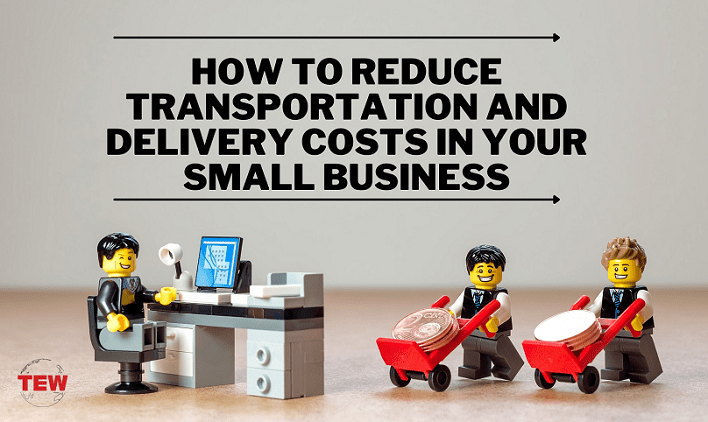The goal of every business is to remain profitable but to do that, you need to either make cuts or increase productivity. It’s in your best interest to become more efficient, as that will make scaling easier. However, if you know how to reduce delivery costs while also upping your production output, you’ll be in a good position to make more money in the future.
11 Ways to Reduce Delivery Cost While Improving Productivity
If high shipping costs are holding you back, try the following 11 solutions to reduce delivery costs.
1. Use a Powerful Courier Management Software
A courier management software is one of the best ways to reduce delivery cost, increase customer service, and make legally binding invoices. By using courier management software, you simplify many transportation and delivery processes, such as route monitoring and optimization, accepting signatures for proof of delivery, and accurately billing customers digitally.
2. Prepay for Shipping Labels
A single shipping label won’t cost you an arm and a leg, but if your business ships multiple times a day, you’ll notice this slight expense rise significantly. However, many large shipping companies (UPS and FedEx) will allow you to prepay for bulk shipping labels. For this to work, you need to know the weight and dimensions of your most popular items for accurate labeling and reduce delivery cost.
3. Include Shipping With Product Cost
When you have an idea of what each item will cost when shipped, you can start including the shipping cost with the product. While this doesn’t reduce delivery costs, it will make it more likely a customer will purchase from you since you’re offering free shipping. 88% of shoppers prefer to buy from websites with free shipping, so implementing this strategy could drive demand.
4. Know the Precise Dimensions of Your Products
While some delivery couriers will offer a flat shipping rate, others will charge you based on weight and package dimensions. You can reduce delivery cost of larger, heavier packages by using boxes that closely fit the size of the products. Even if this means you need to store more various-sized boxes, mailers, and poly-mailer bags, you will eventually cut costs. To learn how USPS can help you save on shipping costs, reduce delivery expenses in your business, and optimize your operations, read it here.
5. Research Insurance Options
Shipping insurance may be necessary for your products, especially if you fulfill multiple orders a day or sell high-cost items like jewelry. Instead of buying insurance directly from the shipping courier, who are notorious for overcharging, purchase it from a third-party company. ShipSaver, Cabrella, and Parcel Insurance Plan are some of the many trusted companies in the industry.
Perform thorough research into these prospects to help you decide which one suits your small business. You can visit their websites or check out some reviews online to gather more information about them.
6. Negotiate Shipping Rates
Most small courier Melbourne companies will allow you to negotiate your shipping costs. This can help you save big-time down the line. To make it more likely, your courier will consider your offer, share your sales projections, expected orders, and your yearly calculated growth percentage, and reduce delivery costs. Never settle on your first shipping rate offer, as it will likely be the worse of the bunch.
Shop for several options to find the best possible deal for your business’s delivery and transportation needs. On the other hand, it’s also important to know that there are logistics service providers who can deliver your project cargo on a budget without even negotiating the shipping rates with them. They offer logistics services with a risk assessment plan to reduce the risk of uncontrollable costs associated with shipping. It can be an excellent way to save money on your small business’s transportation and delivery costs.
7. Avoid Driving to the Post Office
If you’re using a courier and you’re still driving to the post office to drop off your deliveries, stop this practice immediately. Not only are they expensive, but standing in line will take up your valuable time. It’s better to use an online shipping platform that will offer you competitive rates, automate label creation, sync orders, schedule pick-ups, and more, all from your computer.
8. Use a Local Carrier or Hybrid Services
Many big shipping companies will have smaller, local services that partner with them to help startups save on shipping costs. For example, SurePost by UPS picks up your package and transfers it to their primary carrier, UPS. While you can cut costs with a hybrid service, you may not want to use this option for items that qualify for same-day shipping or are heavy or large.
9. Outsource Labor Intensive Jobs
Small businesses commonly create a single position that includes multiple shipping processes. But you actually save more money and increase productivity by separating these roles. An employee who spends their time contacting carriers, processing invoices, and filing claims could use their skills elsewhere. So, it is thoughtful to hire a specialized firm that can handle those tasks for them. Although some outsourcing fees can be costly, it can still help you get more savings because you can increase efficiency and streamline logistics processes by entrusting essential aspects of the job to professionals.
10. Consolidate Shipments
Without proper planning, you could accidentally send out trucks that are half-full and be caught struggling with vans that are beyond capacity. You’ll lose a large amount of money if you continue to do this, so take note of each truck that’s leaving the shipping area. Create an organizational structure that can help you consolidate shipments and cut shipping costs.
Generally, consolidating shipments can be done in two ways. If you’re shipping a smaller weight, consider using the less-than-truckload shipment structure. If you handle the consignment of different products for various customers in one major shipment, using the full-truckload shipment structure is advised. But before choosing a shipment consolidation structure, it’s best to assess your ability to manage consolidated shipments. Otherwise, you end up spending more money in the long run.
11. Properly Organize and Read Transportation Data
To continue to reduce transportation and reduce delivery costs in the future, you need to accurately collect and read data produced by your carriers. Stored transportation data can give you leverage to attain better rates from carriers you already use. You can also provide a history of your industry’s trends and finances. You can use this data to implement continuous improvements.
Conclusion
If your small business has difficulty coping with the delivery and transportation costs, keep the information mentioned above to help you minimize them. The more you know what to do to manage these expenses, the more you can protect your profit margins from shrinking faster.





